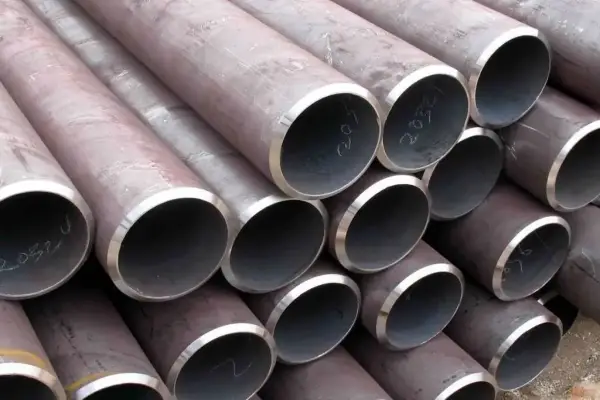What is 410 Stainless Steel?
410 stainless steel is a martensitic stainless steel. It is a stainless steel grade produced according to the American ASTM standard. It is equivalent to China's 1Cr13 stainless steel. It has high hardness, toughness and machinability. It also has good corrosion resistance, hot strength and cold deformation performance, and good vibration reduction performance. 410 stainless steel has a wide range of uses. It is generally used for cutting tools, such as knives, and plays an important role in some mechanical equipment. However, since it is not suitable for harsh corrosive environments, when choosing to use 410 stainless steel, it is necessary to consider the specific use environment and requirements.
Corrosion resistance
410 stainless steel has good corrosion resistance in moderately corrosive environments. Such as atmosphere, fresh water, water vapor, crude oil, gasoline, alcohol, ammonia, mercury, dilute organic acid solutions and cold organic acid solutions, food, organic solvents, etc. However, it is not recommended for use in highly corrosive environments. For example, 410 stainless steel is prone to corrosion in environments such as high-concentration acid and alkali solutions and strong oxidizing media. This is due to its limited corrosion resistance. This is due to its limited corrosion resistance and its inability to withstand highly corrosive environments. In contrast, some stainless steels with higher nickel and molybdenum content, such as 316 stainless steel, perform better in highly corrosive environments. Therefore, when choosing to use 410 stainless steel, its corrosion resistance and other performance characteristics need to be considered according to the specific use environment and requirements.
Type 410 Stainless Steel
410 stainless steel is a hardenable martensitic stainless steel alloy. Unlike austenitic grades it can be heat treated (“quench and temper”) to generate high strength with good ductility. 410 alloy is required when strength, hardness and wear resistance is required with some corrosion resistance.
Due to the hardening capabilities of this steel, other properties and the resulting performance of this material are somewhat compromised. The alloy can only effectively be used in mildly corrosive environments. The operating temperature range is limited a) a loss of strength by over tempering at elevated temperatures and b) a loss of ductility at sub-zero temperatures.
Type 410 is officially a stainless steel but characteristically the material is actually a compromise of high carbon steel alloy (which promotes wear resistance) with chromium stainless steel (which promotes corrosion resistance).
This steel is ideal for use in the manufacture of highly stressed parts found in a variety of industries including petrochemical, automotive and power generation.
410 Stainless Steel Specifications
|
Specifications
|
Brand
|
describe
|
|
ASTM
|
ASTM S41000
|
The specific chemical composition of 410 stainless steel gives it good properties, making it play an important role in machinery manufacturing, construction, tableware and other fields. Whether in China, Japan or the United States, 410 stainless steel is famous for its excellent performance and wide applicability.
|
|
Ton/ton
|
GB/T 1220-2007
|
|
HE
|
Japanese standard G4303-2005
|
Chemical composition
|
Brand
|
C
|
Mn
|
And
|
P
|
S
|
Cr
|
For
|
In
|
|
410
|
≤0.15%
|
≤1.00%
|
≤1.00%
|
≤0.035%
|
≤0.030%
|
11.5%-13.5%
|
0.60%
|
≤0.60%
|
Applications of 410 Stainless Steel
Thanks to its unique combination of properties, 410 stainless steel is widely used across various industries. Some of its common applications include:
Cutlery and Kitchenware: Its high hardness and ability to maintain a sharp edge make it an excellent material for knives and other cutting tools.
Industrial Equipment: It is often used in pump shafts, valves, and fasteners due to its durability and resistance to wear.
Aerospace and Automotive: Components like turbine blades and exhaust systems benefit from its heat and corrosion resistance.
Oil and Gas: In moderate environments, 410 stainless steel is used for wellhead equipment, pipelines, and other critical components.

Machining and Fabrication
Heat Treatment
One of the defining characteristics of 410 stainless steel is its heat-treatable nature. The heat treatment process involves quenching and tempering to achieve the desired balance of hardness and toughness. For maximum hardness, it is typically heated to 980°C–1035°C (1800°F–1900°F), followed by rapid cooling.
Weldability
Although 410
stainless steel is weldable, preheating and post-weld heat treatments are often recommended to reduce the risk of cracking and maintain its mechanical properties.
Machinability
410 stainless steel has good machinability in the annealed condition but can become more challenging to machine as it hardens. Using cutting tools made from carbide or high-speed steel can improve efficiency during machining.






 English
English Español
Español بالعربية
بالعربية











 Phone :
Phone :  Whatsapp :
Whatsapp :  Email :
Email : 


